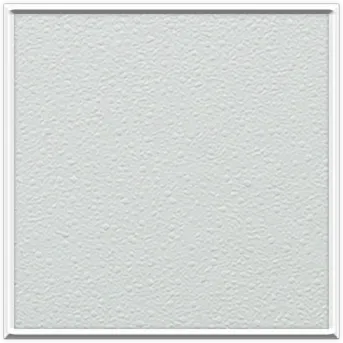10 月 . 31, 2024 06:27 Back to list
what is ceiling grid made of
What is Ceiling Grid Made Of?
A ceiling grid is an essential component in modern construction and interior design, used to create a suspended ceiling system. This system provides a clean, aesthetic finish while allowing access to plumbing, electrical, and HVAC systems hidden within the ceiling space. Understanding what ceiling grids are made of is crucial for anyone involved in building or renovation projects, as the material affects both the functionality and appearance of the finished ceiling.
The primary material used in manufacturing ceiling grid systems is metal. Most commonly, ceiling grids are made from galvanized steel or aluminum. Galvanized steel offers excellent strength and durability, making it suitable for various environments, from residential homes to commercial spaces. The galvanization process involves coating the steel with a layer of zinc, preventing rust and corrosion, which extends the longevity of the grid system. This is particularly important in areas with high humidity or where moisture is a concern, as untreated metal can degrade over time.
What is Ceiling Grid Made Of?
Ceiling grids typically consist of main tees and cross tees, which create a grid-like framework that supports the ceiling tiles. The grid system is designed to hold tiles or panels in place, ensuring that they remain securely positioned while allowing for easy access to the space above. The tiles themselves can be made from a variety of materials, including mineral fiber, fiberglass, and PVC, to name a few. Mineral fiber tiles are popular due to their sound absorption properties and aesthetic appeal. These tiles are often used in commercial settings where acoustics are a priority.
what is ceiling grid made of

Fiberglass tiles are another option, known for their lightweight design and thermal properties. They are often used in spaces that require insulation or in areas prone to moisture, as they resist mold and mildew growth. PVC tiles, while durable and easy to clean, can be utilized in areas that demand high hygiene standards, such as healthcare facilities and kitchens.
In addition to metal grids and various tile materials, ceiling systems may also incorporate soundproofing or additional insulation materials, depending on the specific requirements of the space being designed. This integration can significantly enhance the acoustic performance and energy efficiency of a building.
Finally, the choice of materials for a ceiling grid system can also depend on aesthetic preferences. Various finishes and colors can be applied to the metal grid itself, allowing designers to match the grid to the overall decor of the space. Whether sleek and modern or more traditional, the ceiling grid can complement the architectural style of the room.
In conclusion, ceiling grids are primarily made from metal, with galvanized steel and aluminum being the most common choices. The grid system supports a variety of tile materials, each providing different acoustic, thermal, and aesthetic qualities. Understanding these components can help homeowners and builders make informed decisions tailored to their specific needs, enhancing both functionality and beauty in their interior spaces.
-
Revolutionizing Interior Design with Ceilings t grid Suspended SystemNewsOct.29,2024
-
Revolutionizing Ceiling Design with ceiling access panel with Gypsum Tile WaterproofNewsOct.29,2024
-
Revolutionizing Interior Design with PVC Gypsum Ceiling: A Comprehensive GuideNewsOct.29,2024
-
Elevating Interior Design with High quality Mineral Fiber Ceiling TilesNewsOct.29,2024
-
Revolutionizing Interior Design with PVC Gypsum Ceiling: A Comprehensive GuideNewsOct.29,2024
-
Elevating Interior Design with High-Quality Mineral Fiber Ceiling Tiles: A Comprehensive GuideNewsOct.29,2024







